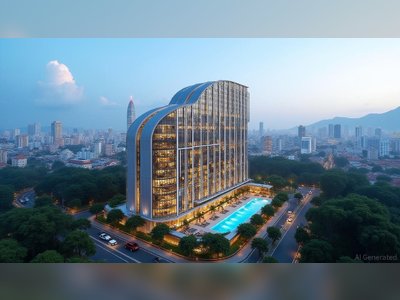Manila Times
Upholding Truth. Empowering the Philippines
Sunday, Aug 17, 2025
The Nation's Story is Told with Honor
Semirara Mining Revives Interest in Saint Raphael Coal Power Project Amid Energy Demand Growth
The company aims to explore new opportunities as the energy landscape evolves and coal remains a significant player.
Semirara Mining and Power Corp. (SMPC), led by Consunji Group, has declared its intention to continue exploring the 700-megawatt (MW) Saint Raphael Generation Corp. (SRGC) project as part of its strategic focus in the energy sector.
At the company's annual stockholders' meeting on May 6, 2023, SMPC Chairman and CEO Isidro A. Consunji emphasized the importance of navigating ongoing market pressures and identifying new growth avenues following a challenging fiscal year.
Consunji noted that the company is reassessing its options concerning the SRGC project, particularly in light of the National Grid Corporation of the Philippines’ (NGCP) updates to its transmission development plan for the years 2024 to 2050. The Saint Raphael project, which is valued at approximately $1.4 billion (around ₱77.7 billion), has notably been exempted from the Philippine Department of Energy’s coal moratorium, allowing it to progress in an otherwise constrained regulatory environment.
Initially announced last year, SMPC's engagement with the SRGC project was contingent on the completion of essential transmission facilities by NGCP, which are necessary for the project to contribute effectively to the Luzon grid.
Analysts anticipate that, with renewed interest in the project, coal will continue to hold a dominant position within the country's energy framework.
Juan Paolo Colet, managing director at China Bank Capital Corp., reflected that despite a decrease in coal prices since 2022, the SRGC project has the potential to significantly bolster the energy supply in Luzon, effectively addressing the region's escalating energy demands.
He highlighted that successful implementation could lower electricity prices amidst robust economic growth.
In alignment with this sentiment, Michael Ricafort, chief economist at Rizal Commercial Banking Corp. (RCBC), acknowledged the potential economic advantages of reviving the coal plant project while also cautioning about possible risks.
Ricafort indicated that an increase in supply from various coal-fired power plants may contribute to lower costs.
However, he noted that local and global regulatory frameworks have increasingly discouraged the establishment of new coal-fired power plants as part of broader environmental, social, and governance (ESG) compliance measures aimed at reducing carbon emissions.
Ricafort further elaborated on the historical context of carbon-emission reduction efforts, which were initiated well before the COVID-19 pandemic, promoting the integration of renewable energy sources such as wind, solar, geothermal, and hydropower.
He pointed out that the Asian Development Bank (ADB) is providing financial assistance to coal-fired power plants looking to transition to renewable energy.
In a significant corporate shift, SMPC had previously terminated its joint-venture agreement with SRGC and Meralco PowerGen Corp. (MGen) in 2020 for the construction of the coal plant, located in Calaca, Batangas, indicating a complex and evolving approach to energy production in the Philippines.
At the company's annual stockholders' meeting on May 6, 2023, SMPC Chairman and CEO Isidro A. Consunji emphasized the importance of navigating ongoing market pressures and identifying new growth avenues following a challenging fiscal year.
Consunji noted that the company is reassessing its options concerning the SRGC project, particularly in light of the National Grid Corporation of the Philippines’ (NGCP) updates to its transmission development plan for the years 2024 to 2050. The Saint Raphael project, which is valued at approximately $1.4 billion (around ₱77.7 billion), has notably been exempted from the Philippine Department of Energy’s coal moratorium, allowing it to progress in an otherwise constrained regulatory environment.
Initially announced last year, SMPC's engagement with the SRGC project was contingent on the completion of essential transmission facilities by NGCP, which are necessary for the project to contribute effectively to the Luzon grid.
Analysts anticipate that, with renewed interest in the project, coal will continue to hold a dominant position within the country's energy framework.
Juan Paolo Colet, managing director at China Bank Capital Corp., reflected that despite a decrease in coal prices since 2022, the SRGC project has the potential to significantly bolster the energy supply in Luzon, effectively addressing the region's escalating energy demands.
He highlighted that successful implementation could lower electricity prices amidst robust economic growth.
In alignment with this sentiment, Michael Ricafort, chief economist at Rizal Commercial Banking Corp. (RCBC), acknowledged the potential economic advantages of reviving the coal plant project while also cautioning about possible risks.
Ricafort indicated that an increase in supply from various coal-fired power plants may contribute to lower costs.
However, he noted that local and global regulatory frameworks have increasingly discouraged the establishment of new coal-fired power plants as part of broader environmental, social, and governance (ESG) compliance measures aimed at reducing carbon emissions.
Ricafort further elaborated on the historical context of carbon-emission reduction efforts, which were initiated well before the COVID-19 pandemic, promoting the integration of renewable energy sources such as wind, solar, geothermal, and hydropower.
He pointed out that the Asian Development Bank (ADB) is providing financial assistance to coal-fired power plants looking to transition to renewable energy.
In a significant corporate shift, SMPC had previously terminated its joint-venture agreement with SRGC and Meralco PowerGen Corp. (MGen) in 2020 for the construction of the coal plant, located in Calaca, Batangas, indicating a complex and evolving approach to energy production in the Philippines.
AI Disclaimer: An advanced artificial intelligence (AI) system generated the content of this page on its own. This innovative technology conducts extensive research from a variety of reliable sources, performs rigorous fact-checking and verification, cleans up and balances biased or manipulated content, and presents a minimal factual summary that is just enough yet essential for you to function as an informed and educated citizen. Please keep in mind, however, that this system is an evolving technology, and as a result, the article may contain accidental inaccuracies or errors. We urge you to help us improve our site by reporting any inaccuracies you find using the "Contact Us" link at the bottom of this page. Your helpful feedback helps us improve our system and deliver more precise content. When you find an article of interest here, please look for the full and extensive coverage of this topic in traditional news sources, as they are written by professional journalists that we try to support, not replace. We appreciate your understanding and assistance.











